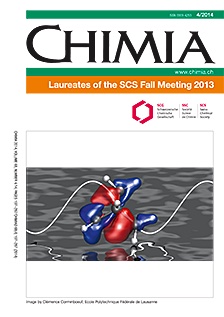Advanced Cathode Materials for Polymer Electrolyte Fuel Cells Based on Pt/ Metal Oxides: From Model Electrodes to Catalyst Systems
DOI:
https://doi.org/10.2533/chimia.2014.217Keywords:
Antimony-doped tin oxide, Catalysis, Cathode stability, Metal oxide, Support materialAbstract
The development of stable catalyst systems for application at the cathode side of polymer electrolyte fuel cells (PEFCs) requires the substitution of the state-of-the-art carbon supports with materials showing high corrosion resistance in a strongly oxidizing environment. Metal oxides in their highest oxidation state can represent viable support materials for the next generation PEFC cathodes. In the present work a multilevel approach has been adopted to investigate the kinetics and the activity of Pt nanoparticles supported on SnO2-based metal oxides. Particularly, model electrodes made of SnO2 thin films supporting Pt nanoparticles, and porous catalyst systems made of Pt nanoparticles supported on Sb-doped SnO2 high surface area powders have been investigated. The present results indicate that SnO2-based supports do not modify the oxygen reduction reaction mechanism on the Pt nanoparticle surface, but rather lead to catalysts with enhanced specific activity compared to Pt/carbon systems. Different reasons for the enhancement in the specific activity are considered and discussed.Downloads
Published
2014-04-30
Issue
Section
Scientific Articles
License
Copyright (c) 2014 Swiss Chemical Society

This work is licensed under a Creative Commons Attribution-NonCommercial 4.0 International License.
How to Cite
[1]
E. Fabbri, A. Pătru, A. Rabis, R. Kötz, T. J. Schmidt, Chimia 2014, 68, 217, DOI: 10.2533/chimia.2014.217.







